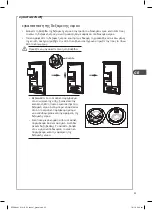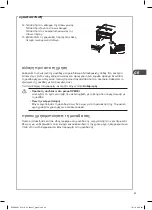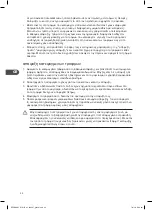
20
GB
defrosting frozen food
1.
Take the frozen food out from the freezer compartment and uncover the frozen food. Let it
defrost at room temperature. Don’t forget that defrosting in a warm area encourages the growth
of bacteria and low temperature cooking may not destroy dangerous bacteria.
2.
Drain off and throw away any liquid lost during defrosting.
3.
Always make sure there are no ice-crystals in the food before cooking, particularly with meat.
These crystals indicate that the food has not fully defrosted.
4.
Cook food as soon as possible after defrosting.
5.
Many microwaves and ovens have a defrost setting. To avoid bacterial build up, only use these if
you intend to cook the food immediately afterwards.
Never re-freeze anything that has been defrosted unless you cook it again, to kill off harmful
bacteria. Never re-freeze defrosted shellfish. Re-seal packs properly after removing items.
This prevents drying or freezer-burn and a build up of frost on any remaining food.
cleaning the interior and the exterior of the unit
• Remove all the shelves and drawers.
• Wipe the inside of the unit with a weak solution of bicarbonate soda and then rinse with warm
water using a sponge or cloth. Wipe completely dry before replacing the shelves, drawers and
salad bin.
• Use a damp cloth to clean the exterior, and then wipe with a standard furniture polish. Make
sure that the doors are closed to avoid the polish getting on the magnetic door seals or inside
the unit.
• The grille of the condenser at the back of the unit and the adjacent components can be
vacuumed using a soft brush attachment.
cleaning the water tank and water dispenser
• Remove the water tank. Wash the tank, tank cover, flap cover and valve lightly under water.
• After cleaning, dry them thoroughly before installing back in the fridge.
• Wipe the receiving base of the water dispenser with dry towel
regularly to avoid overflowing.
Receiving
base
DFCD60W_X16_IB_2L_160407_grace.indb 20
7/4/16 6:26 pm
















































